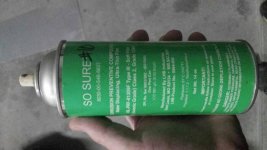I do not live in an evironment where they salt the roads, but I do work on Naval Aircraft which are exposed to a high salinity evironment when deployed aboard ships. We have a 28 day corrosion inspection cycle where we open all panels and look for corrosion and treat as necessary. We use a preservative called Fluid Film, which is lanolin based and very enviromental friendly.
How a 28 day corrosion inspection would look for a JK is this.
Wash and dry.
If you have beadlocks reduce tire pressure and remove the outer ring and inspect the helicoils for corrosion. clean and treat as requried.
Wipe down exposed area with preservative and reinstall outer ring. Soak bolts in preservative. This does two things, one puts a coating of preservative on the threads which will reduce the chance of the bolts corroding to the helicoil and second adds a barrier which prevents water intrusion into the helicoils.
Wipe down all bumpers and apply preservative to all places including the areas you cannot see. For these areas I would recommend using a bug sprayer. Apply a liberal coating of preservative.
Grease all fittings. Pump grease until clean contaminate free grease is coming out. This ensures all grease is fresh.
For a 90 or 120 day inspection or Spring Cleaning.
I would do the same as the 28 day but add the following. On the components you can disassemble do so. Clean and preserve as necessary.
Yes it does seem like a lot to do but it will pay dividends in the long run.
I have worked on helicopters which fly about 1,000 feet above the ocean and land 12 feet above sea level. When landing they create a fine salt spray which covers everything. We do a fresh water rinse on them every day and wash them with soap every week. It works just takes some time to figure out just exactly where you need to focus your attention.
R/
Will

